
The Art of Spring
Hop along with us as we look at some works from Dundee’s Fine Art collection that will get you in the mood for all the joys of Spring!
Tulips in a Glass (1984), oil on board by Ann Patrick (b. 1937)
A sure sign of Spring, these vibrant tulips are a joy to behold, painted by Ann Patrick, daughter of the beloved Dundee artist James McIntosh Patrick. She was born in Dundee and studied at Duncan of Jordanstone College of Art and at Hospitalfield, Arbroath and her teachers included Alberto Morrocco and David McClure. #springflowers #tulips #flowerart #womenartists
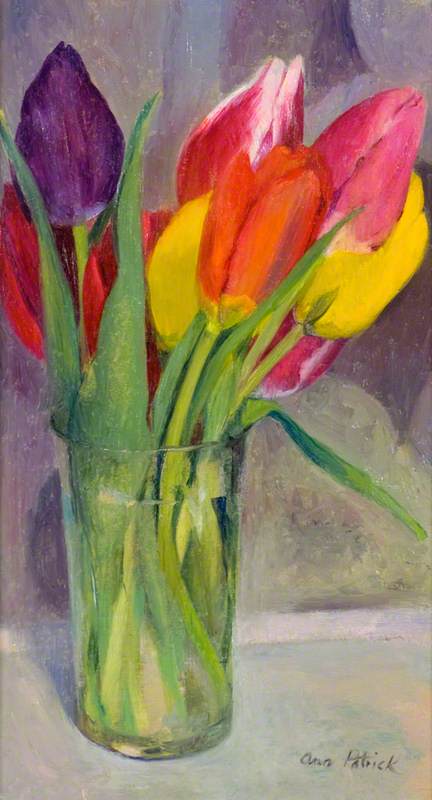
© The Artist
Springtime, oil on canvas by Jane Elizabeth Spindler (1856-1939)
Take a moment to immerse yourself in this tranquil scene - complete with ducks, cows and spring blossom. Jane Elizabeth Spindler was born in Dundee but established a studio in Blairgowrie during the late 1880s. Blairgowrie became a popular town for artists and a group of them – including Spindler - came to be known as the ‘Blairgowrie Boys’, despite the inclusion of Jane! She exhibited with the Royal Scottish Academy, the Royal Glasgow Institute and the Aberdeen Artists Association and showed regularly at the Dundee Fine Art Exhibitions and the Dundee Art Club. #scottishart #womenartists.
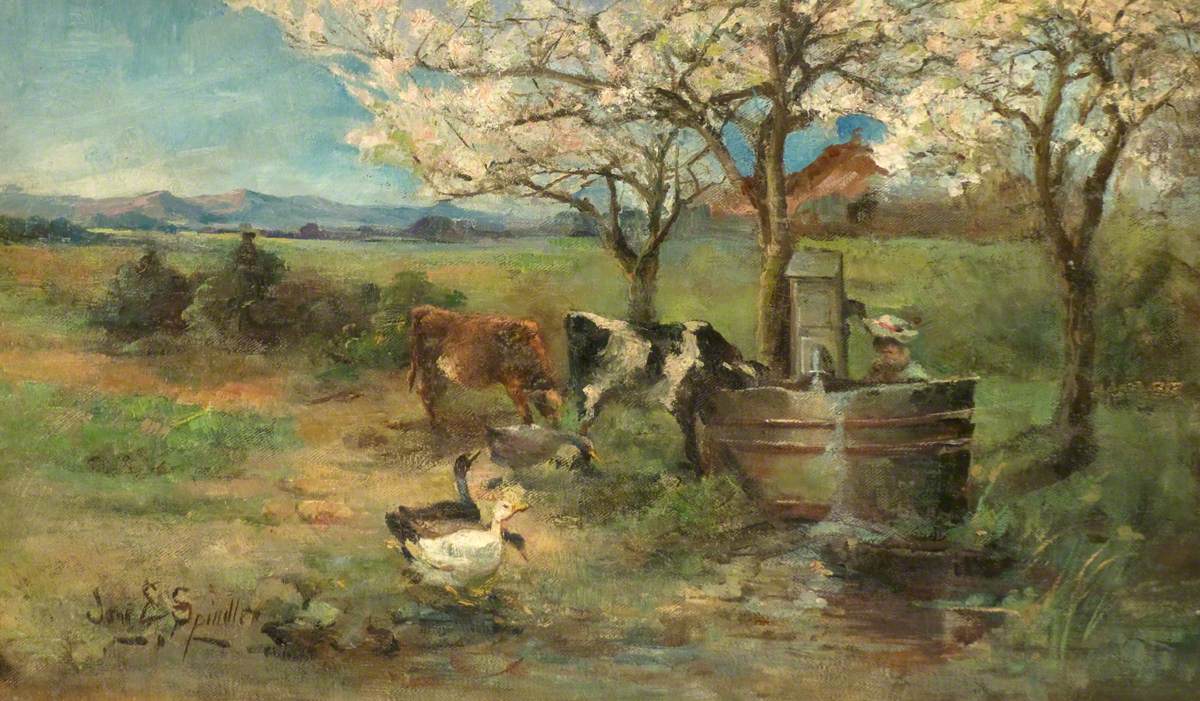
Rabbits, oil on canvas by George Morland (1763-1804)
These bunnies look too preoccupied with their snacks to be delivering any Easter Eggs! These hungry rabbits were painted by George Morland, an English artist born in London. He painted many animals including guinea pigs, horses and dogs as well as everyday rural scenes. A popular artist, many of his works were sold as prints, and his work was shown at the Fine Art Exhibition in Dundee in 1889.

Rites of Spring, etching by John Johnstone (b.1941)
Perhaps this print by John Johnstone will inspire you to shake out the duster and look out the furniture polish for a big Spring Clean! Johnstone was trained and subsequently taught at Duncan of Jordanstone College of Art & Design and he has developed a unique and imaginative narrative style. Rites of Spring is a fine example. Inspired by Scottish daily life, all the figures are shown participating in the annual spring clean. Note the detailed daffodils in the foreground.
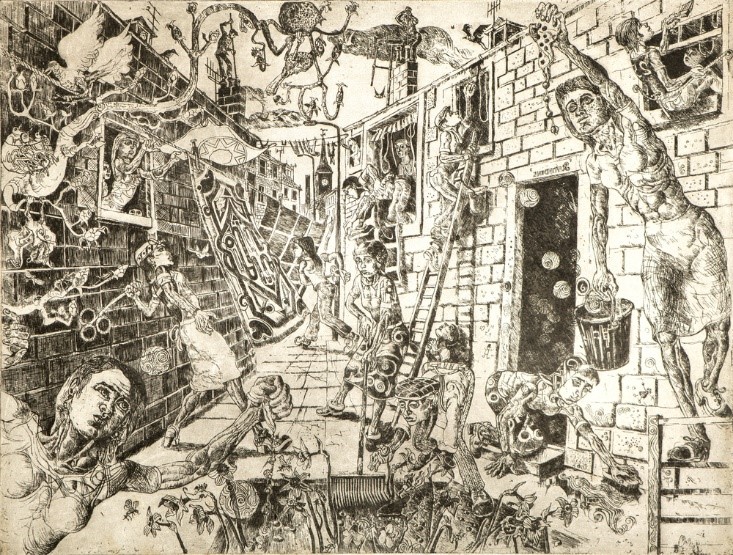
© The Artist
The Earth’s Awakening (1909), oil on canvas by Edward Atkinson Hornel (1864-1933)
Born in Australia but brought up in Dumfries & Galloway, Hornel attended Edinburgh School of Art in 1880–83. He later became involved with the Glasgow Boys, a group of young Scottish artists who rebelled against traditional Victorian sentimentality in art.
Surrounded by snowdrops, the girls in this painting welcome the onset of Spring. This painting is typical of Hornel's later period when he painted local Kircudbright girls in a landscape. He would photograph the figures in his studio (chaperoned by his sister) and would then paint from the photograph later. His style is distinctive for his use of jewel like colour and rich texture, achieved by the use of impasto (thickly applied paint). Note the gem like aquamarine blue of the water through the trees. #glasgowboys #scottishart
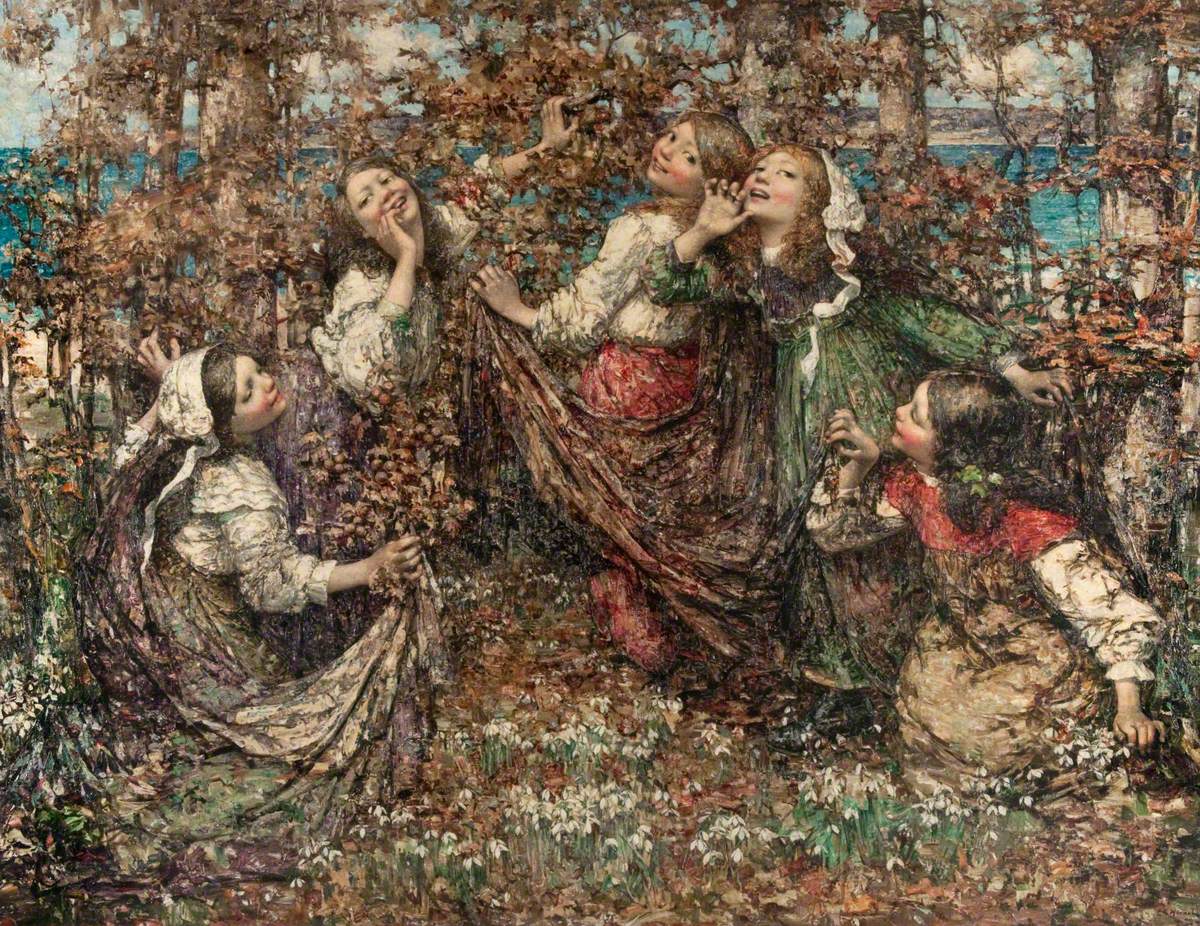
Calves (c.1900), oil on canvas by David Gauld (1867-1936)
Some more spring animals! These gorgeous calves look nice and cosy in their barn, and the artist David Gauld certainly loved them as a subject. He produced multiple paintings of calves and cows, many of which are in multiple Scottish collections. Like E.A. Hornel, Gauld was known as one of the ‘Glasgow Boys’, a group of Glasgow based artists who rejected the formal artistic norms and looked towards France and the Realists for inspiration. #glasgowboys #scottishart.
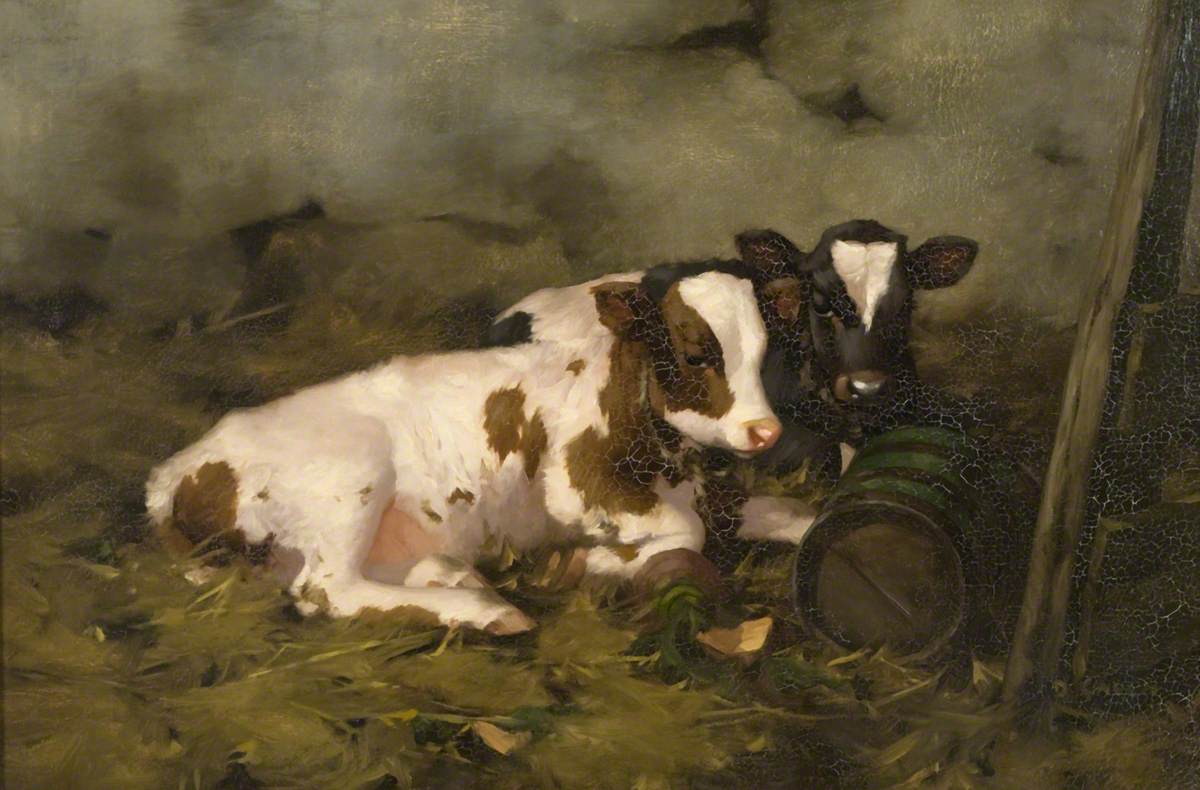
The Coming of Bride (c.1930), watercolour by John Duncan (1866-1945)
This work was inspired by the Celtic legend of Angus and Bride, alluding to the change of seasons. In the story, Beira, the Queen of Winter, keeps the beautiful young Bride captive, until Angus finds her. This painting illustrates the arrival of Bride to meet Angus, appearing through the forest, bringing the signs of spring with her, including primroses and tulips. Dundee-born John Duncan was a leading figure of the Celtic Revival in Scotland. An earlier version of this work, painted with tempera on canvas, is held by Glasgow Museums. #celticrevival #scottishart



